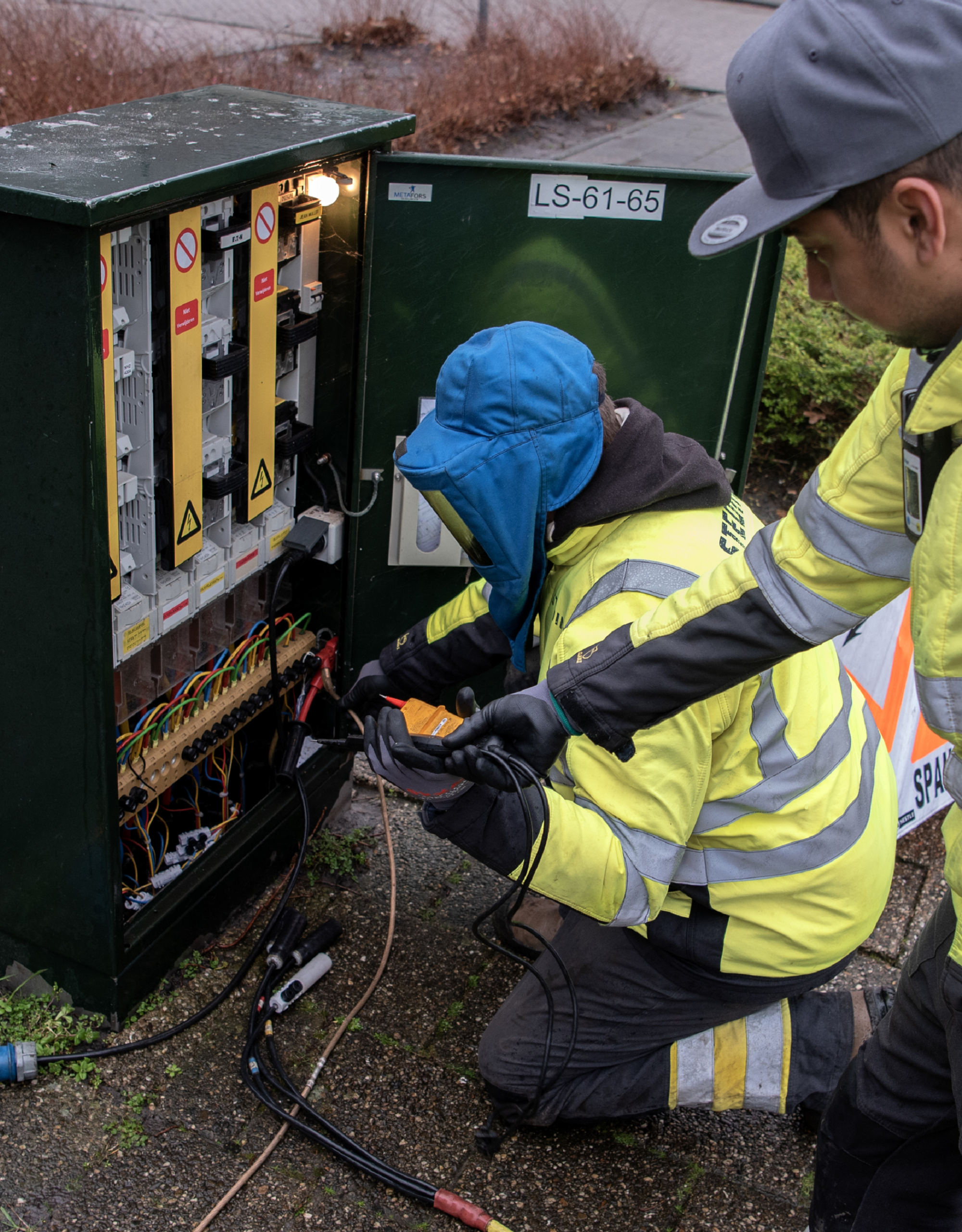Electricity supply reliability
We continuously work on the reliability of our electricity grid. Supply reliability and voltage quality are key to this. This year, we again achieved a high supply reliability for our electricity grid; the average duration of an interruption per consumer was 20 minutes. This is in line with last year and within our target. It equates to a supply reliability of 99.9961%. Again, a great result. Obviously our aim is zero failures, but at the same time the pressure on our grid is increasing.
Annual average downtime for electricity (in minutes)
- * Source: https://www.netbeheernederland.nl/_upload/Files/Resultaten_2022_-_Betrouwbaarheid_van_elektriciteitsnetten_in_Nederland__283.pdf
We continue to make every effort to minimise the number of downtime minutes and voltage issues. We do so by performing maintenance work on our assets, for example. In 2023, Stedin carried out 8,950 LV/MV maintenance jobs, which was 91% of the number we had planned. We could not or did not need to carry out 100% of the planned work because the aforementioned inspections showed that less maintenance work was required, and because extreme in the last two quarters of the year hampered maintenance work.
Two failures that stood out this year were a failure in Schiedam Noord (see box), which contributed almost 1 minute to the annual average downtime, and a power failure in Vlaardingen (see box). More than half of failures are caused by excavation work or an internal defect. An internal defect means that something broke down in a cable or connection (cable sleeve) without us being able to identify the cause.
Failure in Schiedam Noord (MV)
Early in June of this year, there was a major failure in Schiedam Noord involving nearly 11,000 homes and businesses. Because of smoke development in the distribution station, it was decided to disconnect the station from the power supply. Further investigation revealed that a connection of the cable to the plant was faulty. This could only be ascertained after the fire brigade had declared the station safe to enter. Due to the fact that all cables were checked as a precaution, the transmission was restored incrementally. Due to the smoke in the station and the fact that transmission was restored incrementally, it took almost 3.5 hours before the failure was resolved for all customers affected.
Power failure in Vlaardingen
On Sunday 11 June, more than 10,000 customers in Vlaardingen experienced a power cut early in the morning. Because of the hot weather forecast for that day (around 30 degrees), there were concerns about the impact of the power failure on places such as nursing homes. This is why a crisis team was formed immediately. The cause of the failure was a broken component in the high-voltage station. As smoke was coming from the high-voltage station, the fire brigade had to inspect the station before the fitters could get to work. At around 10:30, the power failure was resolved and all customers had their power restored. Fortunately, the crisis team did not have to take additional measures.
Voltage quality
Unfortunately, were are seeing increasingly frequently that the voltage on our grid is too high or too low. In 2023, we took steps to monitor voltage quality on the electricity grid on a larger scale using smart meter data. We can now actively monitor more than 90% of the grid area for excessively high or low voltage.
The number of reports from customers experiencing voltage quality problems rose sharply last year, to 3,300 reports. This is an increase of 119% year-on-year. In the peak month (June), there were 885 reports, compared to 170 reports in the same period in 2022. This was mainly due to solar inverters disconnecting due to overvoltage (too much generated electricity being fed into the electricity grid). The number of neighbourhoods affected by voltage quality problems increased significantly in 2023. Reports of voltage quality issues were received from more than 900 neighbourhoods (of the about 3,200 neighbourhoods).
All reports received and recorded (regarding both excessively high and excessively low voltage), are taken into account in the neighbourhood approach. You can read more about this subject in the ’Starting earlier ’ section.

